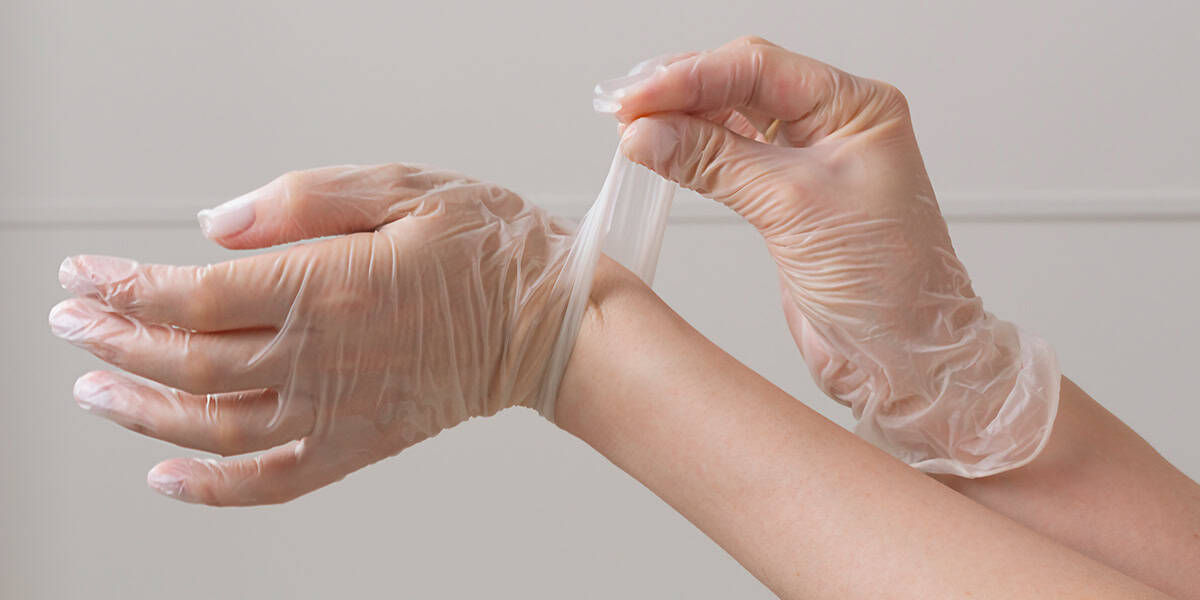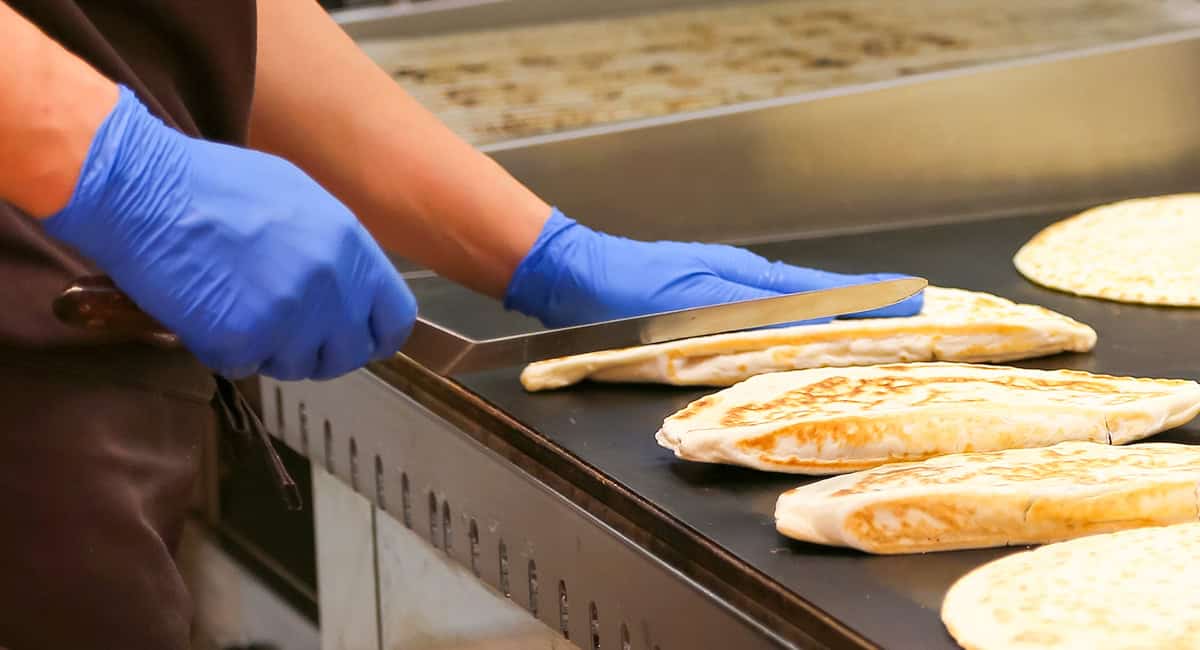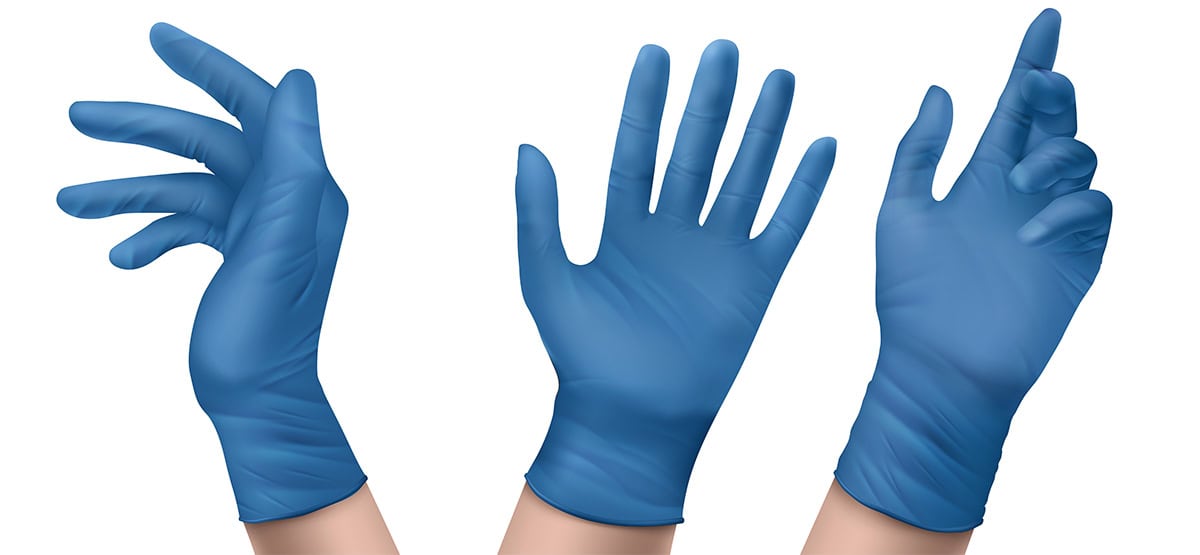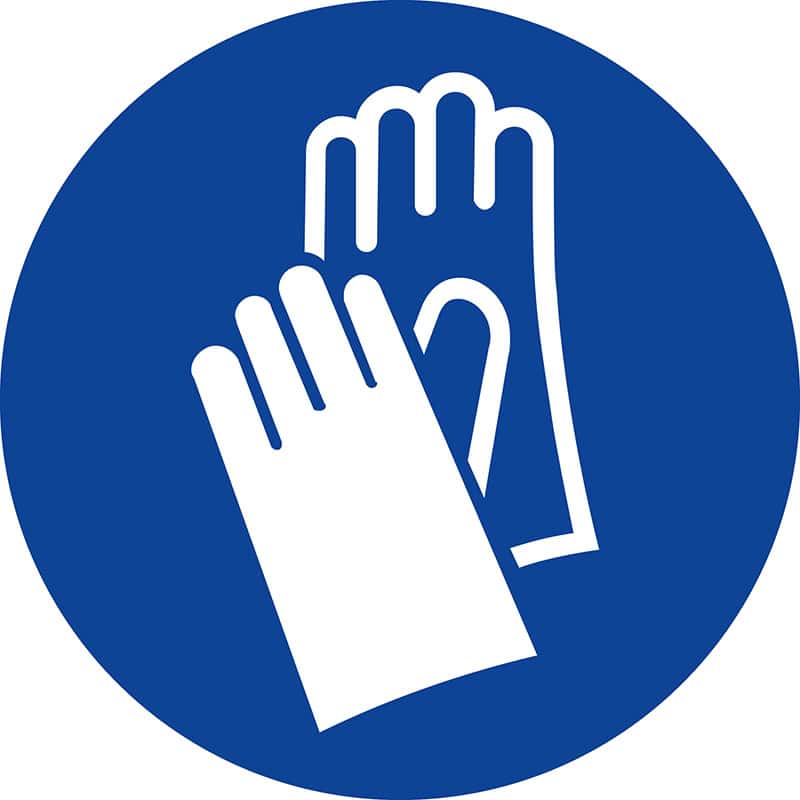
Gloves are an essential part of any first aid kit, yet many people don’t realise how important they are in protecting both the first aider and the casualty during treatment. They provide a barrier from potential contaminants, such as dirt and blood borne infections.
There are three main materials that medical gloves are made from: latex, vinyl and nitrile. Knowing which type is suitable for which situation can sometimes be confusing when determining which to buy as they can look similar, and most are differentiated solely by price. However, choosing the wrong gloves can result in discomfort, reduced protection and sometimes allergic reactions for those with a latex allergy.
Differences between Latex, Vinyl and Nitrile gloves
There are strengths and weaknesses for all three types of gloves, so it’s important to understand the key differences between latex, vinyl and nitrile gloves and why they are better suited for some environments rather than others.Nitrile gloves

Rising to popularity in the 1990s as an alternative to latex gloves when it was discovered that there were many people with an allergy to latex. These gloves are made from synthetic rubber instead, making them more durable and resistant to chemicals.
Pros and cons
Nitrile gloves are tight-fitting and more puncture resistant than both vinyl and latex alternatives. They provide superior protection against chemicals, oils and greases making them ideal for various tasks in catering, cleaning and healthcare environments. Being latex-free, they carry a low risk of allergic reactions, which is especially important in environments with vulnerable individuals.The demand for these gloves increased significantly during the Covid 19 pandemic as the thicker material reduced the risk of infection, however this increase in demand has resulted in the gloves becoming more expensive than their counterparts and harder to get hold of. The denser material also means that there is reduced touch sensitivity, particularly when wearing thicker nitrile gloves.
Typical uses
- Medical environments
- Labs
- Garages
- Vets
- Care homes
- Dentist surgeries
- Warehouses
- Beauty settings – hairdressers, cosmetics
- Manufacturing facilities
- Tattoo and piercing parlours
- Cleaning services
- Catering
- Pharmaceutical
- Forensics
- First responders
- Painters
Vinyl gloves

Vinyl gloves are made from PVC, a petroleum-based film, that became a popular type of glove due to how inexpensive they are.
Pros and cons
Vinyl gloves are a cheaper alternative to both latex and nitrile, providing a non-allergenic and readily available option for various low-risk tasks. However, they offer significantly less protection than the alternate types due to their looser fit, thinner consistency and poor resistance to chemicals and punctures.These gloves are commonly used in the catering industry because of their low allergen risk and competitive pricing. However, they can’t be used when handling fatty foods in the same way as nitrile gloves can, due to certain plasticiser components of the glove becoming soluble upon contact with oils and fats, posing a food safety risk.
Typical uses
- Catering
- Painters
- DIY and home improvement
- Hairdressing
- Light manufacturing
- General cleaning
- Retail (cash handling)
- Housekeeping
- Arts and crafts
- Schools
- Beauty treatments
Latex gloves

Latex gloves were recommended in the 1980s and 1990s as a way to protect against bloodborne viruses. However, their rise in popularity highlighted the number of people who had allergies to latex. They still have their uses for those who don’t have latex sensitivity as outlined below.
Pros and cons
Latex gloves are made from thin rubber that allows them to be highly flexible and maintain a high touch sensitivity. They are ideal for protecting a wearer from harmful biological substances, bloodborne pathogens and cross contamination in general.The main drawback for these gloves is latex being a common allergen. This has led to many workplaces limiting or banning the use of latex gloves to reduce risks to both first aiders and casualties.
It can also be hard to detect when the gloves have been damaged through piercing or tears due to how thin the material is. A damaged glove can compromise protection, especially in hazardous environments, and the user may not realize a breach has occurred.
Typical uses
- Medical environments
- Spas
- Food handling
- DIY and home improvement
- Care homes
- Veterinary surgeries
- Dental surgeries
- Labs
- Beauty settings – hairdressers, cosmetics
Choosing the right gloves for your needs

The type of glove that best suits your needs will depend on a variety of factors including:
1. High or low risk environment
With all three having varying levels of puncture and chemical resistance you will be able to make a decision on which gloves suit your needs based on the risk level of your tasks. For example, vinyl gloves are suited for a low-risk environment, so are not recommended when there is a risk of biological infections or hazardous waste like in hospitals, however, Nitrile gloves are more durable and will protect more against biological hazards and certain chemicals so are better suited for higher risk environments.2. Fit and touch sensitivity
If your work requires a high level of touch sensitivity, latex gloves are often the best choice. Despite their potential allergenic properties, they offer excellent elasticity and dexterity, making them suitable for surgical procedures and beauty treatments. Nitrile gloves also provide good dexterity and are a preferred hypoallergenic alternative to latex. However, vinyl gloves are less flexible and offer the least touch sensitivity, so they are generally not recommended for healthcare or beauty treatment settings.If you are unsure which size to purchase, regardless of the type of glove, we have created a guide to help you decide between small, medium and large.
3. Cost
Vinyl gloves are popular in environments such as catering and hospitality due their low price. With the number of gloves that are disposed of on a daily basis in food preparation areas, budget considerations often drive the choice of glove type for these environments. Latex gloves are a mid-range option while Nitrile are the most expensive.4. Compliance
Industry standards and regulations often influence glove choice. Allergy policies, particularly in healthcare and beauty sectors, may restrict the use of latex gloves. Alternatively, nitrile gloves are commonly used in industrial and chemical settings because their superior protective qualities help employers comply with legal health and safety requirements.Conclusion

In conclusion, the choice between nitrile, latex, and vinyl gloves should be based on the specific requirements of your first aid environment, considering factors like risk level, potential allergies, and the nature of tasks performed.
For low-risk settings and settings where gloves are in high demand, meaning budget considerations require cheaper options, vinyl gloves are ideal.
For settings that have a lower risk of allergic reactions and require higher touch sensitivity, latex gloves are the best option.
But for high-risk settings where protection and hygiene are critical, investing in quality nitrile gloves like the Unicare Nitrile Gloves ensures both safety and compliance.
Read our other blogs for more information on first aid or contact us for further advice and information on our products.
By Sarah Mason
Explore more:

